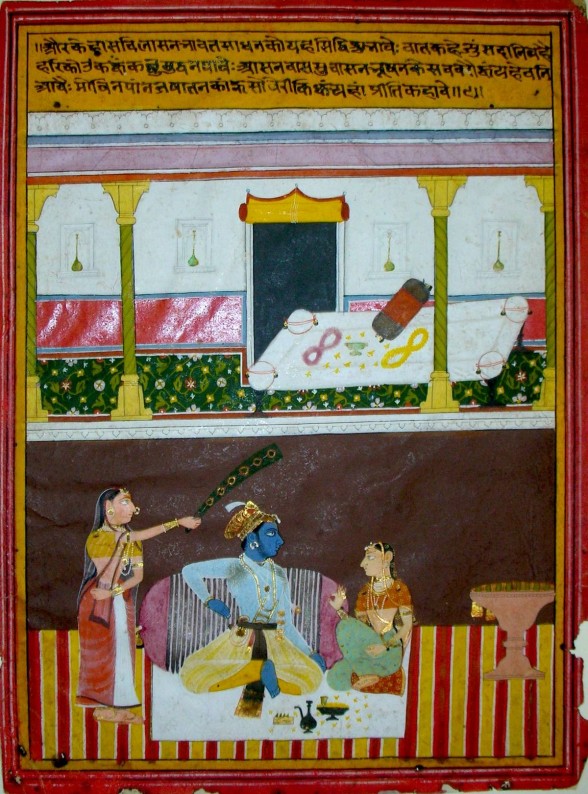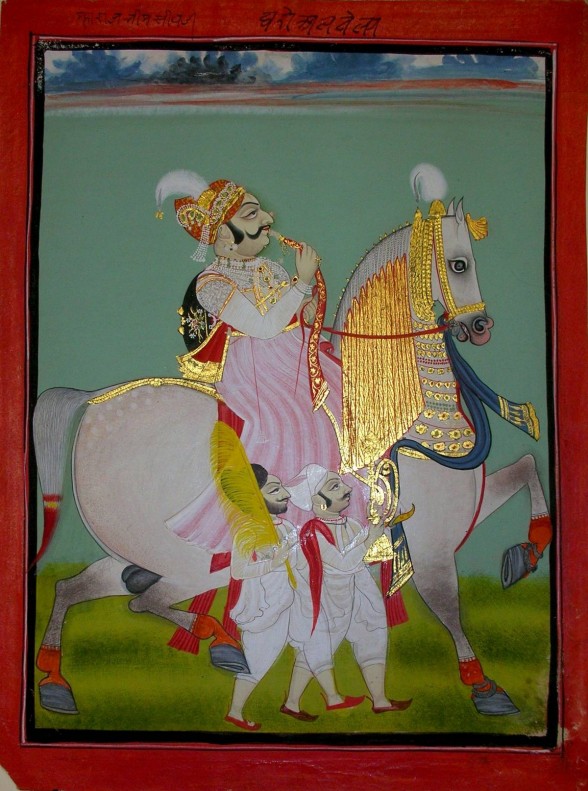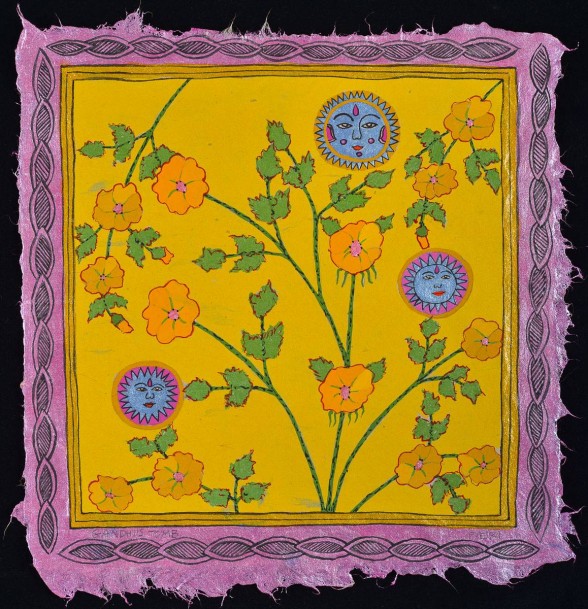[Irena considers the connection between Indian miniatures spanning the 18th and 19th centuries and the work of contemporary artist Diane Pieri, concluding that the juxtaposition is an aesthetic success. — the Artblog editors]
Taking a piece of contemporary abstract art and comparing it to an established, familiar art genre is an interesting way to ease some viewers into enjoying the abstract work. This is the primary approach at La Salle University Museum, as it showcases two complementary exhibits: Poetic Visions, a carefully selected group of Indian miniatures from the museum’s permanent collection, and Phases of the Sun, a selection of local Philadelphia artist Diane Pieri’s colorful works on paper.
The gorgeous miniatures from Northern India create an introduction for the equally enticing contemporary works that Pieri is producing, which in turn act as modern takes on the aesthetics conveyed by traditional Indian art.
History captured in detail

Made possible by a recent conservation grant, Poetic Visions‘ 38 spectacular Indian miniatures deal with a variety of traditional subject matter, including domestic scenes, portraits of great Indian kings, and scenes with Krishna and other major deities. The pieces span the 18th and 19th centuries and vary in size. They were donated to the university by the late Dr. Alvin Bellak, an avid collector of Indian art, and they are, in my opinion after some careful observation, some of La Salle’s most exceptional acquisitions.

One of the primary admirable qualities of Indian miniatures, besides their detailing, is the use of the precious materials with the paint, such as the gold and silver adorning “Maharana Bhim Singh of Mewar on Horseback”. It pays to view these special pieces in La Salle’s intimate museum setting.
Miniature inspiration
In a separate gallery of the museum hang 15 of Diane Pieri’s abstract and decorative works on paper, rich in vibrant colors and patterns. The works, filled with symbolic imagery (suns and lotus flowers), are treated with both delicate line work and passages of abstract brushwork in the backgrounds.

The pieces are all on the small scale (about 9″ x 9″) and painted on soft Japanese paper handmade by the artist. The paper is deliberately shredded on the sides, making it a part of the piece itself, rather than just a platform for the medium. Pieri’s pieces are tinged with a folky whimsicality; however, her primary inspiration lies in Indian miniatures, which she refers to in her artist statement as having “unearthly beauty”. Her works echo the organic intricacy of Indian miniatures and other forms of Indian art and craft, which the artist was likely heavily exposed to while traveling through India in 2011–though she was drawing inspiration from this region much earlier on.
Chief curator of La Salle University Museum and co-curator of Poetic Visions, Klare Scarborough, made it clear in our discussion of the two shows’ relationship that they were truly meant to be a collaborating force.
It isn’t especially clear whether or not Pieri’s works connect to Indian miniatures in ways that transcend aesthetic qualities, but they do not necessarily have to. The experience the artist creates with her small-scale works is similar to the one we get from the intricate brushwork and fantastical narratives of North Indian art: that is, intense visual experiences on an intimate scale. Poetic Visions and Phases of the Sun form a successful joint operation that aims to appeal to different palates.
Poetic Visions: Indian Art from the Permanent Collection and Diane Pieri: Phases of the Sun are on view at La Salle University Museum through Feb. 27, 2015.









